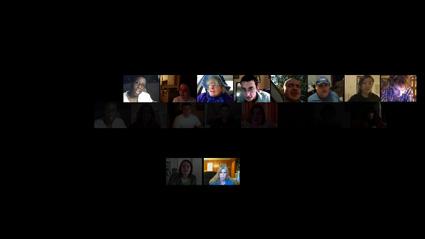Another self-portraiture show? That was the initial response from many when our current exhibition The Sum of Myself: Photographic Self-Portraits from the Audrey and Sydney Irmas Collection first came into being. But, hello to all of you out there blogging, tweeting, tumbling, and facebooking—today’s technology, nearly second nature to so many people, might be perceived as simply another layer of navel gazing (excuse me, self-portraiture), so to me this exhibit seems more relevant than ever. The most current form of internet “self-presentation” is on view in this exhibit by way of a sublime, multiple-video installation by Natalie Bookchin, entitled Testament, which was completed with BCAM’s galleries specifically in mind.
But I’m starting at the end of the story first. Before the internet and the permutations that Natalie wrought, we have an entire history of photography by way of more traditional means. The collection, however, is not displayed chronologically but in thematic groupings, a thoroughly non-linear path ending with Bookchin.
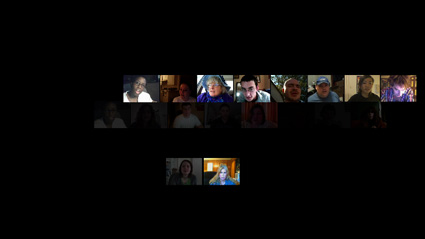
Natalie Bookchin, Testament, 2009 (still detail from video installation), Ralph M. Parsons Fund, © Natalie Bookchin
One of my favorite line-ups includes a wall with a Robert Doisneau (1953) using the classic optic tool, a mirror, which leads to an Anne Collier (2004) disco ball, and on to Anton Stankowski— who?—who cares; it’s a stunning 1937 multiple exposure, pre-photoshop, pre-everything; and ends with a funhouse distortion by Berenice Abbott (1930).

Clockwise from top left: Robert Doisneau, Self Portrait, c. 1953, Anne Collier, Mirror Ball, 2004, Anton Stankowski, Simultaneous Enlargement, 1937, Berenice Abbott, Portrait of the Author as a Young Woman, c. 1930
To be honest, this is the way I typically travel the museum. Much as we try to hand you a very well-considered roadmap as you enter, when I tour friends through the galleries I hopscotch madly over styles and time periods. There are many such wanderings within this exhibit, moving from the more predictable photo tricks with mirrors, reflection, and distortion, to the use of light, shadow, and repetition…

Leonard Nimoy, Self Portrait, 2003
…to more complex photo collage/montage work…
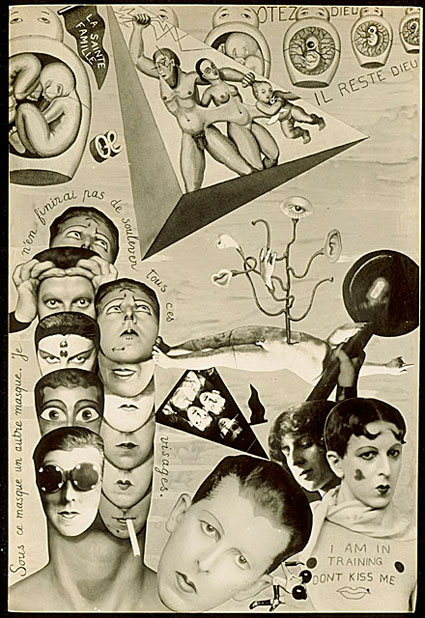
Claude Cahun, I.O.U. (Self Pride), 1929–1930
…and from that, further into abstraction—the one place most people still believe photography isn’t supposed to go.
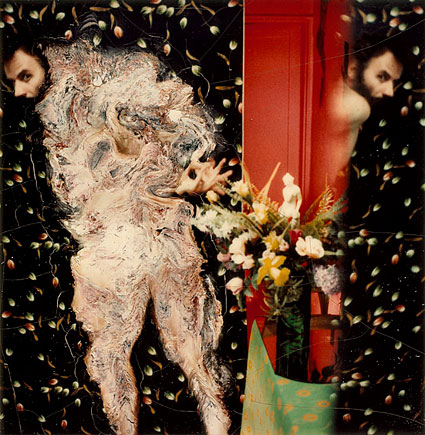
Lucas Samaras, Photo Transformation 8/19/76, 1976
After this, things become increasingly more theatrical, branching out from conceptual works by Bruce Nauman and Duane Michaels to heightened domestic scenarios by Catherine Opie.

Bruce Nauman, Study for Holograms, 1970, Catherine Opie, Self Portrait, 1993
A final grouping, experienced just before entering the Bookchin piece, is a wall of seven artists whose gaze is so strong and pure they stop you in your tracks—and this after two rooms of repeating selves. Nan Goldin stares unflinchingly at herself in a mirror despite the darkened room; Diane Arbus stands semi-nude and pregnant (a photo sent to her husband to announce her pregnancy); and Robert Mapplethorpe’s face looms dramatically out of a black void, complete with the foreboding skull cane as prop.
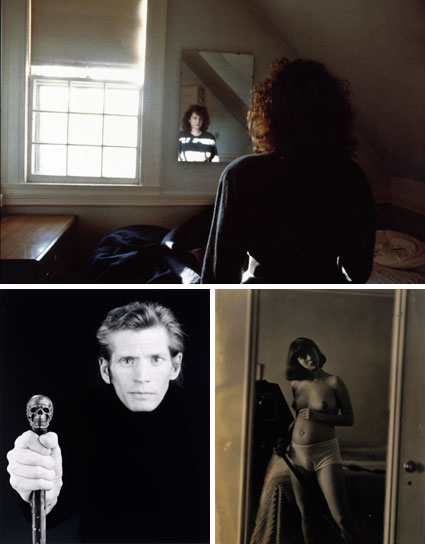
Clockwise from top: Nan Goldin, Self Portrait in the Mirror at the Lodge, Belmont, MA, 1998, Diane Arbus, Self Portrait in Mirror, 1945 (detail), Robert Mapplethorpe, Self Portrait, 1988. All images in this post: The Audrey and Sydney Irmas Collection
Ideally, by exhibition’s end you can no longer readily say what defines self-portraiture. If your visit to this show left you with a question mark, not an answer, then something about this meander was done right.
Eve Schillo, Curatorial Assistant, Wallis Annenberg Photography Department



